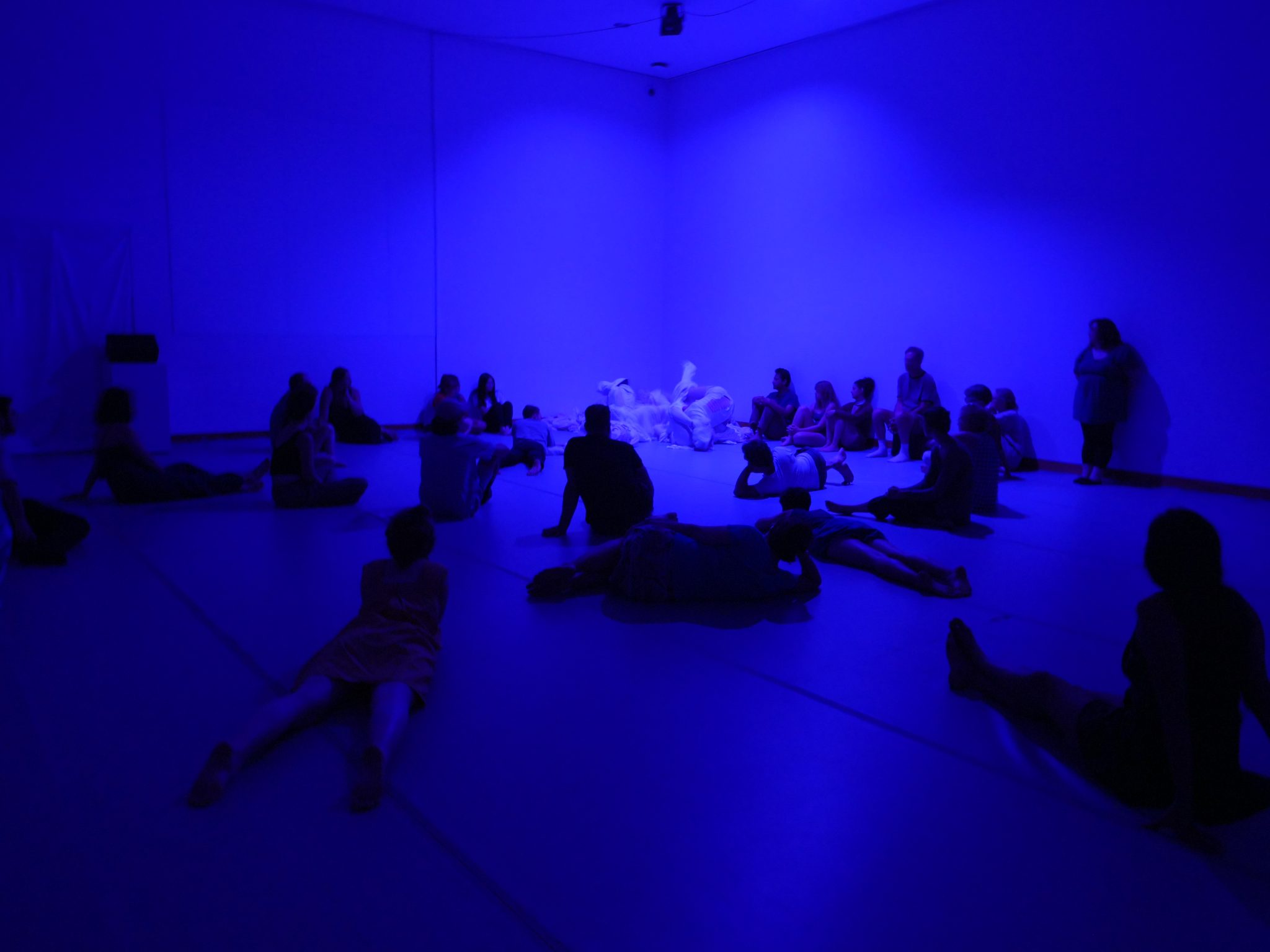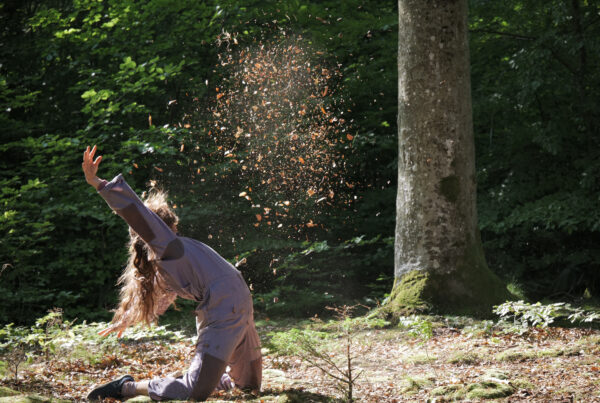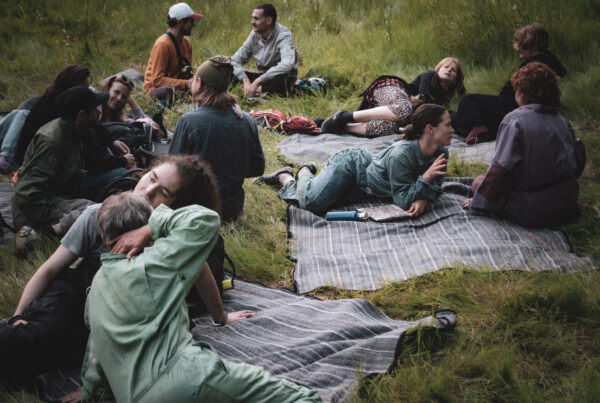
REFLECTIONS ON THE PERFORMANCE FELT ROOM BY BODYCARTOGRAPHY PROJECT
The performance space is a stage-less, featureless, roomy white cube with only the functional elements in it: white dance floor, lights, speakers, no chairs. Five dancers share floor with the audience. A pile of white cloth in the corner: dancers will use that. Most of the audience members sit along walls, but some break off towards the center of the space, wondering among dancers before taking position on the floor. One of them is a woman in a bright yellow dress who lies down away from the wall, slightly off the floor’s center, on her back. She stays there for the better part of the three-hour long piece, sometimes looking up at the ceiling, sometimes turning her head towards the action, sometimes with her eyes shut. At some point the constantly changing light turns blue. The yellow dress practically radiates energy, drawing the attention of audience and dancers alike. A single audience member becomes the center of gravity, organizing the space around herself, creating a map of perceptual salience and physical action as the gazes and the dancers drift towards her until, gradually, she is incorporated entirely in the performative act and becomes inseparable from it—achieving all that by wearing a yellow dress and lying down on the floor.
Cartography is the practice of creating maps. BodyCartography Project maps bodies. Or, rather, it creates conditions for mapping bodies. Or, even more precisely, it creates conditions for owners of bodies—dancers and audiences alike—to map themselves on the performance territory. Improvisation, so fundamental to BodyCartography, is the tool by which this mapping is done. For dancers, improvisation is the matter of lifelong training in simultaneous reading of the surroundings—the physical space, the audience, other dancers—and instantaneous acting in response. For audience, improvisation is largely the matter of routine personal decisions to act on one’s own intuitions and, ultimately, take responsibility over one’s own experience. The decision can be, for instance, to wear a bright yellow dress and lie face-up, slightly off center on the performance floor.
Cartography can be violent if the mapping is imposed on space, or liberating if the occupants of space take responsibility over its organization. Mappings by BodyCartograpy Project are liberating: they create conditions for the audience to take responsibility over space. Seemingly trivial decisions of where to sit, what to wear and where to look may have a profound consequence for everyone in the space and are, as such, inevitably political. Philosopher Alva Noë wrote that experience is not something we have—it is something we do. For the BodyCartography Project this is not an abstract philosophical concept but an operational principle. All they do is tell you: “The experience is all yours. Do it.”



